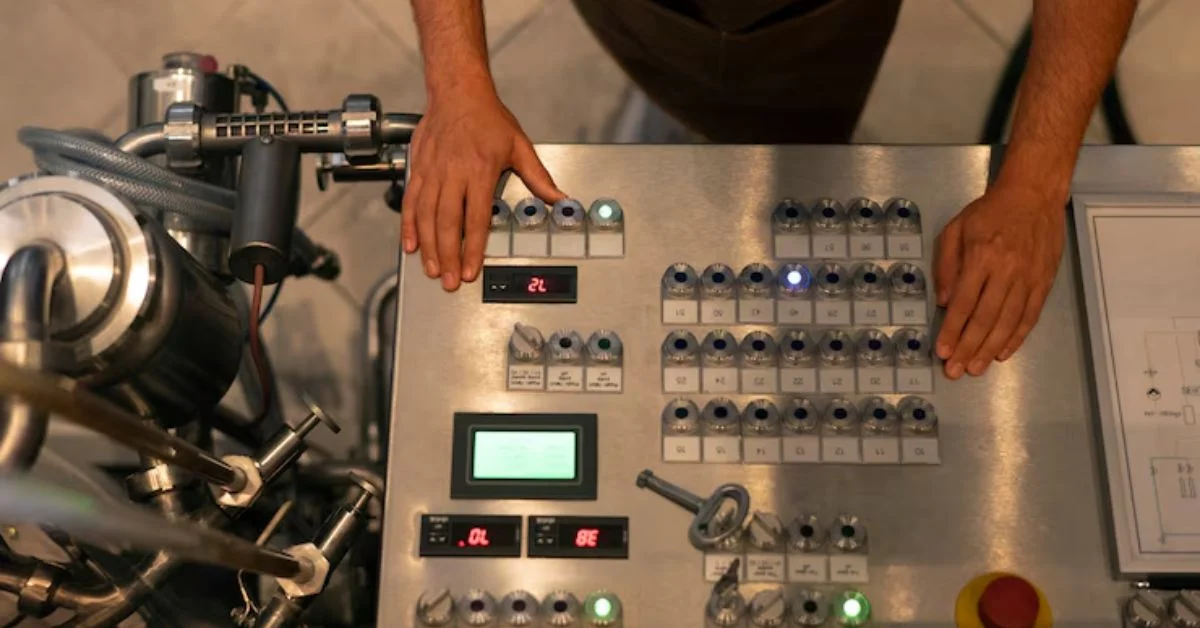A roto turn typically refers to a rotational turning tool or mechanism used across industries—from precision machining lathes to portable kitchen gadgets. It involves a powered rotating action that enables shaping, drilling, polishing, blending, or even cooking. This article delivers a full overview. You’ll learn how roto turn tools work, where they’re used, and what innovations are shaping their future in manufacturing, DIY, home living, and beyond. It digs into operation principles, materials, design evolution, safety practices, and emerging technology—offering a knowledge-packed and accessible guide for professionals, amateurs, and curious readers alike.
Introduction: Ubiquity of the Roto Turn
In everyday life and industrial practice, rotating tools sit at the heart of efficiency and innovation. From the familiar kitchen stand mixer’s bowl rotating attachment to the massive CNC lathes turning metal shafts, the roto turn is the logical axis of movement. Its applications stretch beyond mills and mixers into dentistry, ceramics, and even assembly robots. Despite their variety, all implement a core concept: controlled rotation transforming shapes or materials.
Understanding roto turns means appreciating how motion becomes function—how turning is not just movement but transformation.
1. The Engineering Behind Roto Turn
A. Principles of Rotational Motion
There are two critical categories: constant rotation (like drills or mixers) and indexing rotation (rotary tables moving in steps). Precision depends upon spindle speed (RPM), torque, and load capacity. Balancing these leads to efficiency and high-quality output.
B. Drive Systems
- Electric motors for consistency
- Pneumatic motors where spark is a hazard
- Hydraulic drives for heavy-duty torque
- Manual cranks in small-scale or portable realms
C. Bearings & Support
Smooth, vibration-free rotation requires hardened steel or ceramic bearings and precision-aligned shafts—crucial across manufacturing or even small machinery.
D. Control & Automation
Entry-level tools rely on manual wheels, but advanced setups integrate CNC control, feedback sensors, and touchscreen interfaces, making roto turn equipment increasingly smart.
2. Applications in Industrial Manufacturing
Where manufacturing meets precision, roto turn tools are indispensable.
A. CNC Lathes and Milling Machines
- CNC lathes feature rotable spindles with automatic tool changers
- Can reduce parts in seconds, creating shafts, bushings, rings
- Used in, e.g., aerospace, automotive, medical implants
B. Rotary Tables and CNC Routers
Mounted on milling machines, these rotate workpieces angle-by-angle, enabling complex multi-axis cuts, common in mold making and aerospace parts.
C. Tool Grinding and Polishing
High-precision grinding wheels beneath or attached to spinning assemblies ensure tool sharpness or surface finishes raw-ground steel can’t match.
D. Assembly Line Rollers
Motorized barrelling or turning conveyors precisely rotate packed components—ideal during soldering, drilling, or inspection.
3. Roto Turn in DIY & Small Workshops
Portable, electric-driven roto turn devices have found their way into home workshops:
A. Wood Lathe
A 4″-chuck rotable spindle allows users to craft bowls, baseball bats, or decorative spindles. Variable speed—easy for carving or non-ferrous materials.
B. Rotary Tools like Dremel
Tiny abraders or drills capable of 30,000–40,000 RPM, perfect for hobbyists engraving or shaping small parts.
C. Metal Mini-Lathes
Hobbyists turn stock into polished gear shafts or mini engine parts—rotational precision rivaling professional shops.
D. Shaping and Polishing Devices
Rotating sanding drums or leather wheels polish home-cut knives or jewelry parts to mirror finish.
These tools democratize manufacturing, helping every craftsperson in basements replicate professional forms.
4. Everyday Life: Roto Turn in the Kitchen
The modern home also delights in turning products:
A. Stand Mixers & Decorative Attachable Turntable
Bowls can rotate at variable speeds with beater attachments that turn doughs or stir batters evenly.
B. Rotisserie Spit
Motor-driven rotating spit cooks meat evenly—the minni roast will baste itself.
C. Clever Coffee Makers & Juicers
Cylindrical rotating drums gently churn beans or fruit, unlocking balanced flavors.
D. Cake Turntable
Used by decorators to smoothly shade and pipe icing—an offshoot of industrial rotary know-how.
5. Roto Turn in Medical, Professional Tools
A. Dental Lathes
Ultra-high-speed, tiny rotary burs reshape molds, polish appliances—rotation at 200,000 RPM for precision dentistry.
B. Laboratory Rotators
Digital centrifuges or rotors gently mix blood or agents at precise speeds—control and balance is critical in diagnostics.
C. Prosthetics Polishing Wheels
Low-speed wheels refine the shape of dentures or orthotic components.
6. Material Science and Roto Turn
From forming metals to final sheen, finishing routines rely on specialized roto turn devices:
A. SPIN-Forming
Thin metal shapes are spun against forms—rotor speed and force sculpt panels or domes for aerospace or cookware.
B. Friction Welding
Using spin-welding, components fuse—rotating one part while applying axial force builds solid-state joints.
C. Surface Finishing
Soft wheels burnish surfaces to mirror polish, smoothing imperfections.
7. Safety & Best Practices
Rotation tools demand high respect—here’s how to handle safely:
- Secure workholding: Chucks, collets
- Speed selection cautious of material and process
- Appropriate guards and PPE
- Tool maintenance: Proper lubrication of spindles
- Training: Even simple machines need operator education
These reduce accidents like entanglement, thrown parts, overheating, and kickbacks.
8. Toroidal Trends and Emerging Innovations
A. Precision and Miniaturization
Micro-lathes can turn 3mm components—vital for medical micro-screws.
B. Smart Sensors & IoT
Vibration, load, or temperature sensors detect misalignment or tool wear—stopping before breakdown.
C. 3D Printing Integration
Pharma into metal parts, roto-turn processes provide finishing steps for printed forms.
D. Eco-Motors
Brushless motors, variable drivers, and scheduled sleep modes bring energy efficiency.
E. Safety via AI
Machine vision systems retract live spindles if gloves or hands come too close.
9. Choosing the Right Roto Turn Tool
A decision-making checklist:
- Identify Your Task: Power vs. precision?
- Material Type: Hard steel vs. foam?
- Rotation Speed Range
- Torque Requirements
- Workpiece Size
- Automation Needs
- Safety Features
- Budget
- Support/Parts Availability
This ensures that each user—from home hobbyist to production manager—gets equipment tailored to needs.
10. Future Outlook
Over the coming decade:
- Smaller, smarter, connected roto turn tools will integrate into education and makerspaces
- Hybrid tools mixing rotating drills with additive manufacturing heads
- Ethical design focus with noise-dampening and energy efficiency
- Open-source digital controls for hobby-grade CNC lathes
This future positions roto turn as more than hardware—it becomes a memory space for knowledge and creativity.
Conclusion
The roto turn is a silent architect behind modern productivity—from steel shafts and wood bowls to yogurt whips. Though the term may not be widely recognized by name, its mechanical principle is interwoven into fabrication, hospitality, medicine, and domestic living. Roto turn devices show that rotation is not just movement—it is transformation. As these tools become smarter, safer, and more precise, they’ll empower users to shape, finish, and craft with ever greater finesse.
Frequently Asked Questions (FAQs)
1. What exactly is a roto turn device?
A roto turn is any tool that rotates an object or workpiece to shape, mix, polish, or cook it—ranging from industrial CNC lathes to kitchen appliances.
2. Who uses roto turn tools?
Users include professional machinists, hobbyists, woodworkers, jewelers, home cooks, dentists, and lab technicians—anyone requiring precise rotation.
3. How do I choose a safe roto-turn?
Consider your application, material, required RPM, torque, safety guards, training, and certification support.
4. Can I use a roto turn tool at home?
Absolutely. Hobby-grade lathes, Dremel-style tools, or cake turntables bring professional techniques into domestic settings.
5. What innovations will shape roto turn tools?
Expect smart sensors, IoT connectivity, hybrid additive/mechanical heads, and AI safety around axis movement.
For more information, click here.









